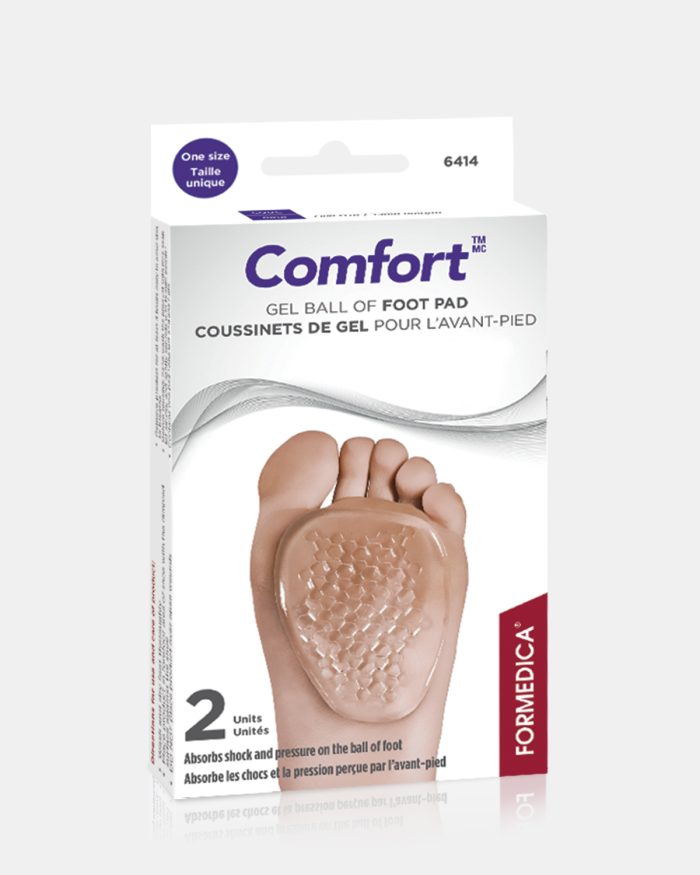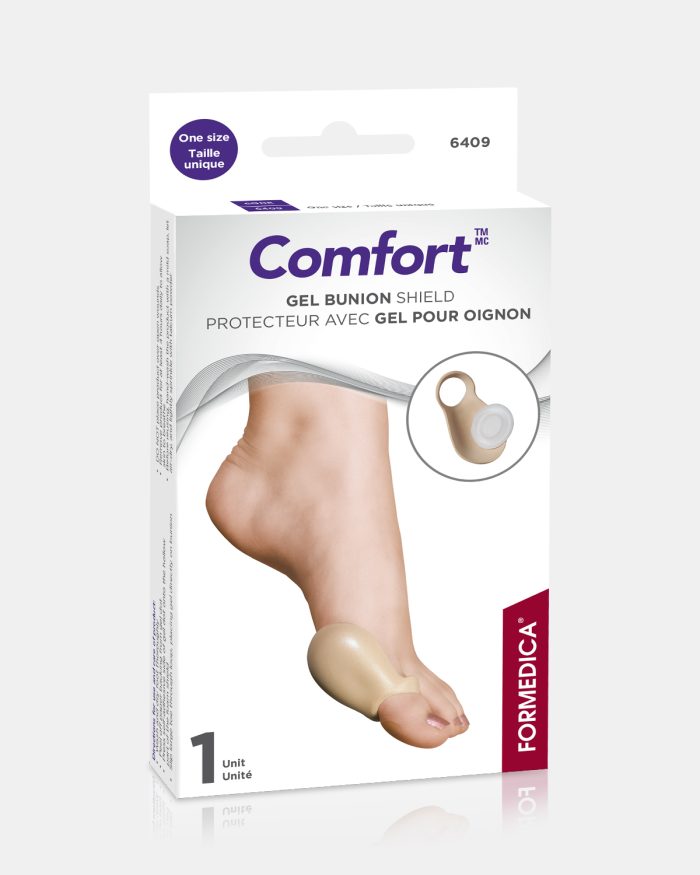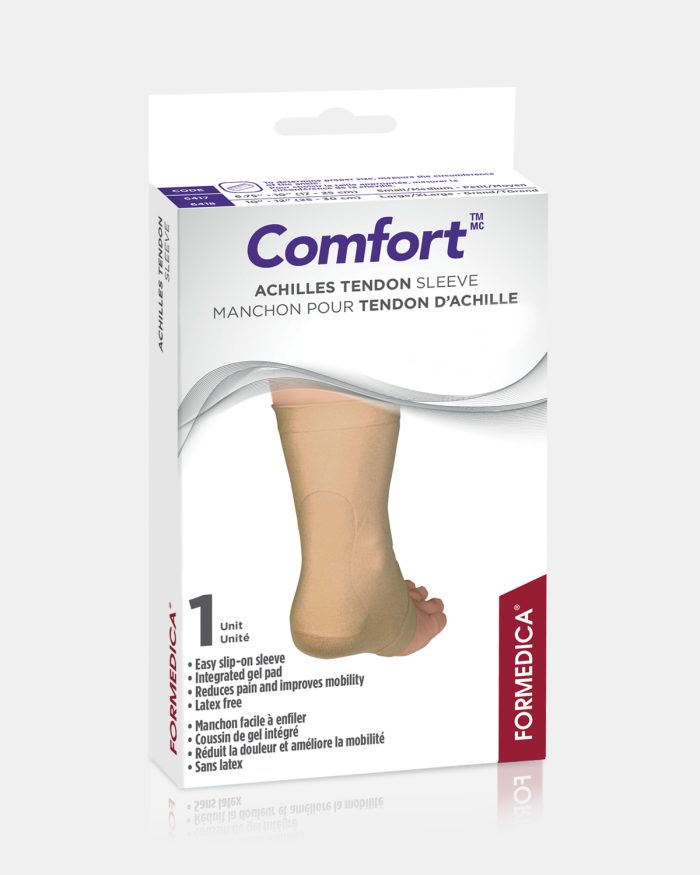Flip-flops and sandals, brand new leather shoes, sturdy hiking footgear, fleece-lined winter boots, waterproof rubber boots, sky-high pumps, everyday flats, pointed-toe cowboy boots, ski boots, skates, rollerblades, worn-out sneakers… every wardrobe holds potential enemies that cannot wait for their opportunity to scrape your skin and bend your feet.
With countless footwear possibilities all year round, your skin has very little time to heal. Too often, giving way to our busy schedule, we neglect these little aches and pains. But you should be aware that sometimes, something that appears to be benign could worsen and lead to complications, even handicaps. This modest podiatry article should help you identify the main pathologies, as well as the care and precautions you need to take to avoid having a real “rock in your shoe”.
Small and big feet disorders: How to prevent them, how to treat them
Blisters
Blisters are small benign afflictions that generally occur due to prolonged friction, which in turn causes the outer layers of the epidermis to separate. In the space created by that separation, there is a clear liquid that is often mistaken for puss, but is in fact lymph.
Blisters are one of your body’s defence mechanisms as they form a protective layer for the underlying tissues. This natural pad is however very sensitive and fragile. It can tear at the slightest chafe, in which case it could lead to infection.
How to prevent blisters?
The following tips can help you avoid developing those nasty blisters.
First of all, keep your feet dry
Blisters thrive in heat and humidity so choose footwear that minimizes perspiration.
- Avoid wearing airtight shoes, such as rubber boots, for a long period of time. When possible, choose ventilated sports footwear instead.
- Opt for socks that are suited to your activity. Wool and polyester are excellent fibres to control humidity.
- When needed, use a drying foot powder.
Choose the right footwear for your activities
If you know you will have to walk, put comfort first, especially if you are going hiking! A light shoe that doesn’t provide any support for your feet is contraindicated.
Double your socks
This is an effective sports trick. If your shoes provide sufficient room so your feet are not constricted, use two pairs of socks to minimize friction between your feet and your shoes.
Use preventive bandages
When you purchase a new pair of shoes, think about protecting the most vulnerable areas of your feet (heels and toes) until they are worn in. This will help you shape your shoes without sacrificing your feet.
Damage has already been done? Wear a second skin!
As soon as you notice some redness, you should wear a bandage to protect the affected area.
If a blister has already appeared, the best thing you can do is to cover it with a hydrocolloid dressing, sometimes called a “second skin”. You will find these dressings at your local pharmacy, in the first aid aisle. If your blister has burst open, make sure you clean and disinfect it first.
Bunions or hallux valgus
Bunions (or hallux valgus) are characterized by a swelling of the joint and soft tissues at the base of the big toe, which forces it to bend inwards. This affliction can occur with varying degrees of pain.
What causes bunions to appear?
In many cases, shoes are to blame, particularly high-heeled or pointy shoes, which explains why women are more prone to bunions than men.
However, some people may see bunions form no matter how hard they try to avoid them. Some of the reasons include:
- Family history;
- Neuromuscular disorders;
- Joint disorders, such as arthritis;
- Severe foot injury;
- Birth defects or issues that affect a person’s gait;
- Menopause.
Preventing the pain of bunions
Here are a few methods to help alleviate the pain and discomfort of bunions:
Change your shoes
First, it is important to determine if vanity is the source of the problem. If so, it may be beneficial, for at least a certain period of time, to wear well-adjusted, comfortable flat shoes. It is also possible to ask a skilled cobbler to stretch your shoes.
Wear protective pads
Some protective pads are made specifically to relieve bunion pain through a thin layer of gel that helps reduce the pressure caused by the shoe to the affected area.
Take medication to relieve pain and swelling
In cases of intense pain, anti-inflammatory medication can provide some relief. There are also creams with analgesic properties, which you can apply locally.
Still got a problem? Consult an expert
If non-surgical methods do not bring you the relief you need, your physician will advise you on surgery. This decision should be made by considering the severity of your symptoms and the risk of complications.
Calluses, corns and callosities
Calluses, corns and callosities result from an abnormal swelling of the outer epidermis, most often due to excessive friction or pressure between the shoes and feet.
How to tell calluses, corns and callosities apart
Calluses consist in a thickening of the cornea that serves as a protective layer for the support zones of your feet. They are typically a shade of creamy-yellow, round or oval, and often show striations on the surface. People suffering from calluses sometimes feel like they have a rock in their shoe.
Corns are characterized by a small but painful yellow bump that most often appears around the joint of a toe. They are made of a cluster of dead cells. They can be soft or hard, but nonetheless very painful because they tend to compress nerves.
Callosities often appear on top of calluses, on your foot plantar pressure points. Light yellow and of an uneven shape, they are larger than corns and do not have a central core that compresses nerves. They therefore give off a burning sensation that is less localized than the acute pain associated with corns.
How do calluses, corns and callosities form?
Calluses, corns and callosities mainly result from friction and compression caused by ill-adjusted or inadequate footwear. Of course, high heels are the first items to come to mind, but this also applies to the infamous summer flip-flops.
These afflictions may also be caused by postural abnormalities during gait. For instance, it could result from putting too much pressure on the forefoot or on the outside of the foot.
How to soften hard corn?
In the majority of cases, treatment can take place at home, with supplies found at the pharmacy.
First, pamper your feet
The first step of your beauty ritual consists in removing the shoes that are responsible for the problem, and storing them away for a few days. Then, soak your feet in a bath or basin to soften skin.
Perform a light scrub
The purpose of the scrub is to gradually soften your skin. It can be performed on damp feet with a pumice stone, or on dry feet with a file or a rasp. It is not painful because the thickening of the skin is made up of dead cells.
Use an emollient cream
The use of a keratolytic cream once or twice per week can act as a substitute for the scrub. Keratolytic agents (AHA) stimulate the cell renewal process, help exfoliate the skin, and moisturize the outer layers of the epidermis. Salicylic acid contained in certain creams will destroy the excess of keratin that causes corn to appear. It is however important to avoid applying it to cracked or irritated skin.
Wear protective pads or toe separators
You will find on the market a wide variety of pads designed to protect the different friction or pressure zones of your feet. They help alleviate the pain or discomfort caused by calluses, corns and callosities.
Hammertoes and claw toes
These two pathologies are characterized by deformation of the toes.
The hammertoe occurs due to the hyperextension of the joint located at the extremity of the toe, which curves upwards.
The claw toe is characterized by the hyperextension of the proximal phalanx, which causes flexion of the other two phalanxes and pressure to be placed on the extremity of the toes.
These deformities may result in joint pain, the formation of corns atop the joints or of callosities under the forefoot. Corns can also appear between the toes. Over time, they can lead to the dislocation of the toe and loss of function.
How do toes become deformed to resemble a hammer or a claw?
As for most types of foot pain, one of the primary causes of toe deformities is tight shoes or high heels. Other factors that also contribute to these afflictions include:
- Genetic predisposition;
- Certain neurological disorders, such as hollow foot brought on by a paralytic disease;
- Neurological or muscular trauma to the leg or foot;
- Certain inflammatory foot disorders, such as rheumatoid arthritis.
Can these deformities be treated?
Of course, the best treatment you can give your feet is to wear comfortable footwear. It is therefore not recommended to wear heels that are higher than 4 centimetres – at least, not often.
If harm has been done and your toes now show signs of angulation, wearing pads and toe splints can help alleviate and correct deformities. There are also soles designed specifically for splayed feet.
If conventional treatment fails, a surgical intervention may be advised in order to correct the deformed axis.
Sources
[Blisters]
http://www.topsante.com/sante-au-quotidien/maux-du-quotidien/Ampoules-aux-pieds-comment-choisir-les-bons-pansements/Ampoules-aux-pieds-quel-est-l-interet-des-pansements-double-peau
[Bunions]
http://www.canalvie.com/sante/articles/les-oignons-aux-pieds-2866/
http://sante.canoe.ca/condition_info_details.asp?disease_id=306
http://sante.planet.fr/pieds-comment-en-finir-avec-les-oignons.6416.514.html?page=0,1
[Corns]
http://sante-medecine.commentcamarche.net/faq/3229-se-debarrasser-des-cors-au-pied
[Calluses]
http://www.doctissimo.fr/html/beaute/soins-du-corps/articles/pieds/soins-pieds-anti-callosites.htm
http://www.radins.com/dossiers/soins-et-remedes-dire-adieu-aux-pieds-calleux,529.html
[Callosities]
http://www.e-sante.fr/comment-venir-bout-ces-cors-durillons-qui-nous-cassent-pieds/actualite/668
http://sante.planet.fr/pieds-8-solutions-anti-cors-et-durillons.1792.514.html
[Hammertoes]
http://www.epitact.com/fr/avis-dexpert/soins-de-podologie/orteils-en-marteau-et-orteils-en-griffe-quelques-precisions/index.html
http://www.santeweb.ch/santeweb/Maladies/khb.php?Orteil_en_marteau_orteil_en_griffe&khb_lng_id=2&khb_content_id=18447


